Introduction
We know inclusive employers earn higher revenue and grow faster. We know they enjoy 87% less attrition, are 70% more likely to win new markets, and create 2.3x more cash flow per employee.
So why do women, on average, still make $0.82 to every $1 earned by men, a ratio that hasn’t budged in 15 years?
Research and experience have shown that companies’ intentions and outcomes are not aligned — and that systemic change can only happen if company leaders champion that change from the top down.
Following are tips and best practices from pay equity experts so you can start making progress today.
“We know that global pay equity can be a tough nut to crack, but closing the pay gap at your company is something you can own, and guess what? You don’t have to do this alone.” Traunza Adams, former Chief People Officer, H1
Download a PDF version of the full pay equity analysis report by filling out this form, or keep scrolling to read.
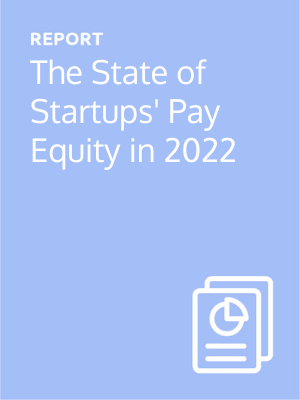
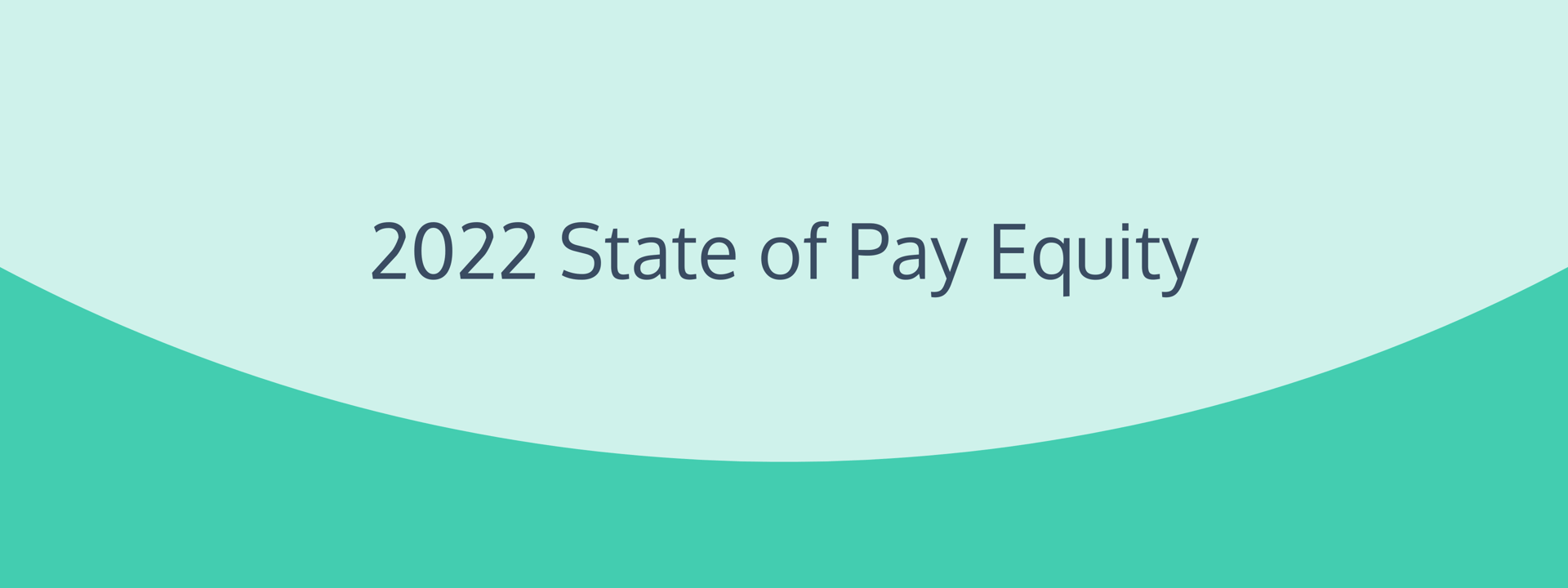
2022 State of Pay Equity
Following is a summary of the state of pay equity in 2022.
Pay equity matters to most executives, especially CEOs.
The majority (74%) of executives say pay equity is important, especially CEOs (78%). Nearly two-thirds (64%) believe pay equity is a top priority at their organization, and CEOs are 9% more likely to strongly agree.
Pay equity greatly influences recruiting and retaining the best talent.
More than two-thirds (67%) agree with this statement. CEOs are 6% more likely to strongly agree.
While 78% of CEOs say pay equity is important, and 73% say it influences recruiting and retaining top talent, the majority of their teams lack resources to address pay equity.
The majority of teams lack resources to address pay equity.
CEOs aren’t in tune with the reality that most of their teams (61%) lack adequate resources to address pay equity. In fact, CEOs are 15% more likely to be unaware of this fact than HR leaders.
Three top barriers to action stand in the way.
Access to compensation data (19%), leadership buy-in (15%), and time (13%) are the largest barriers to solving pay inequality.
Organizations that prioritize pay equity use seven top best practices to overcome their top pay equity roadblocks. Keep reading here to learn what they are.
“Equal pay legislation dates back to 1963. We’ve been talking about this problem for long enough. It’s time for totally new approaches that guarantee transparent and fair pay for all.” Amy Cross, Founder, Gender Fair
Resources
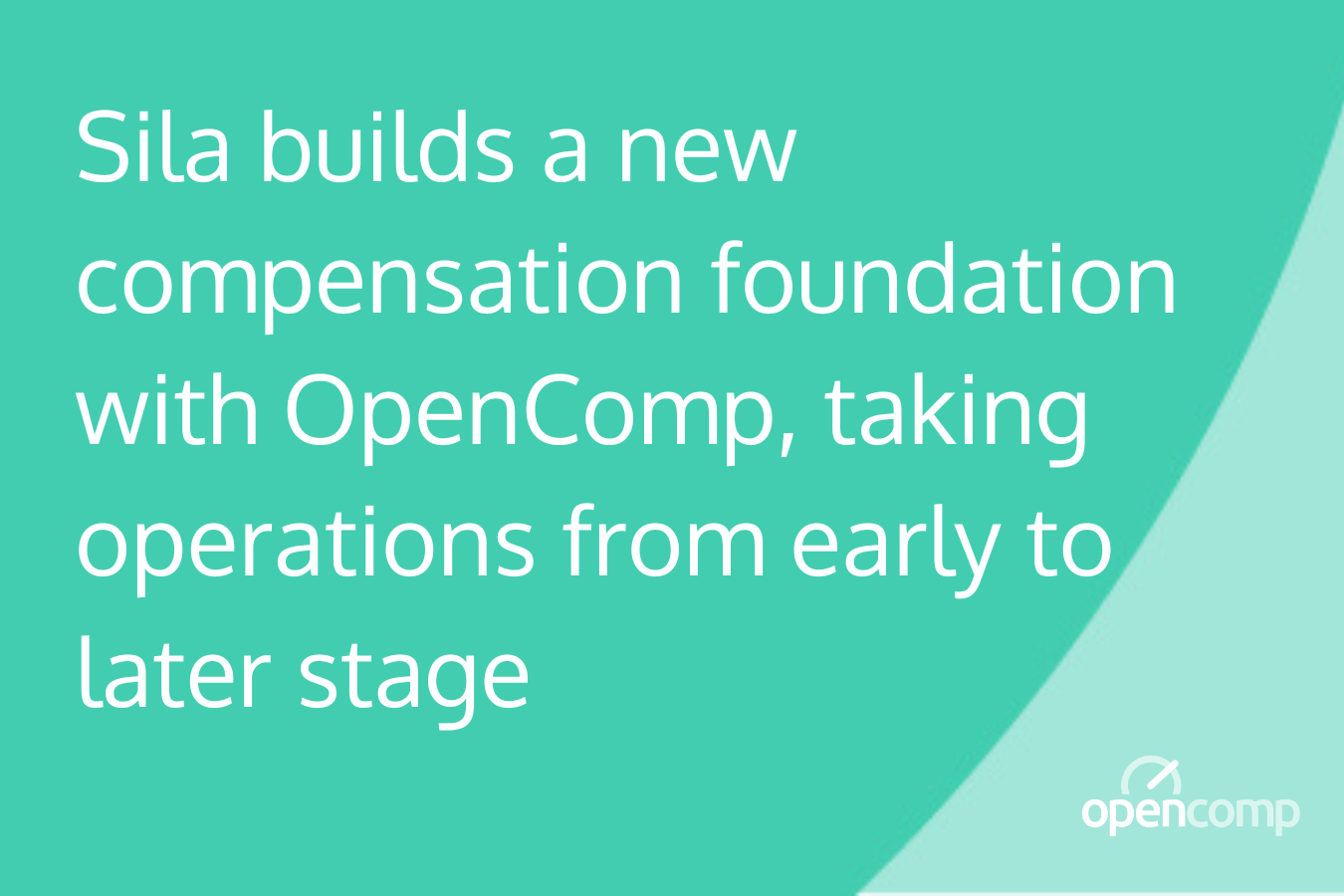
Sila builds a new compensation foundation with OpenComp, taking operations from early to later stage
Read More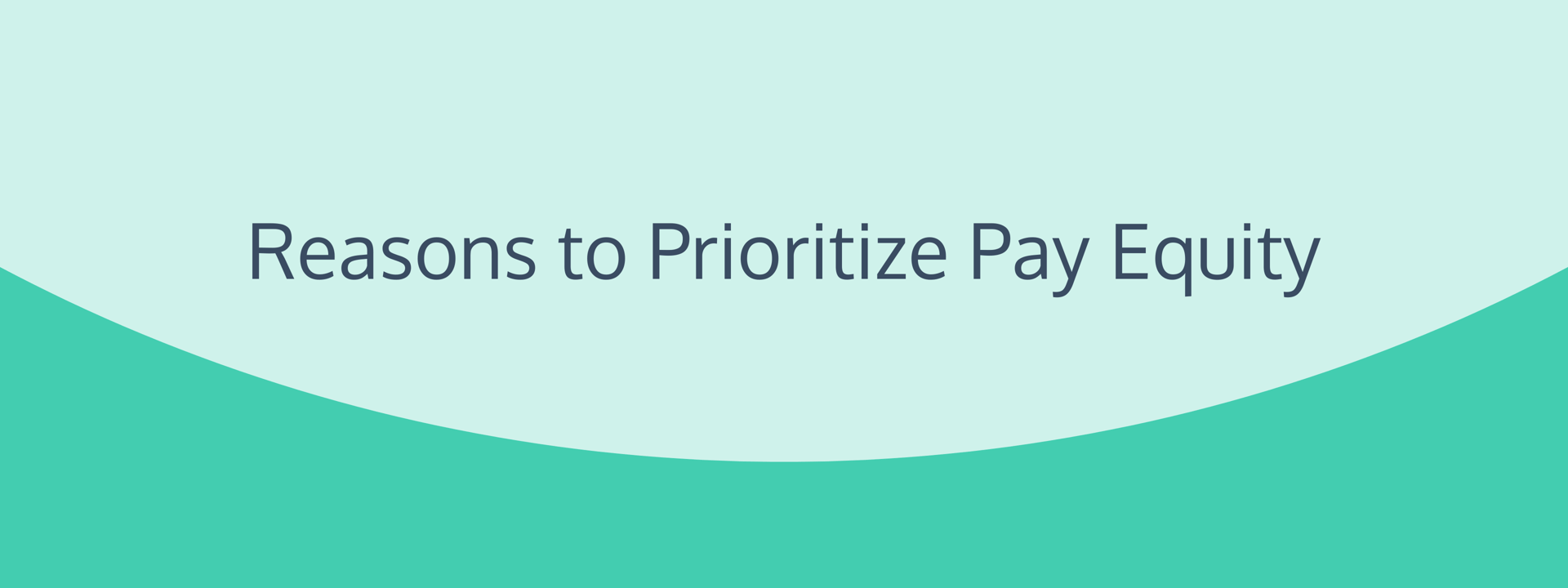
Reasons to Prioritize Pay Equity
Where does pay equity fall on your list of priorities?
Especially during economic downturns, it’s easy for companies in survival mode to pause pay equity and diversity, equity, and inclusion (DEI) practices. If that rings true for your organization, reconsider.
While it might be prudent to prioritize cost-saving measures, rolling back or even deprioritizing pay equity practices can have immediate and long-term consequences that can harm companies, employees, and the communities where they play an important role. It doesn’t need to be a zero sum game.
Here are five reasons why it’s important to maintain pay equity practices — including pay equity analysis — even if you don’t have the budget to make adjustments now. Plus, learn best practices you can implement in any economic climate.
1. Make the most of limited resources and plan for the future
Despite the economic downturn, some companies are still likely to have a finite amount of resources to make salary adjustments. Knowing where to target those resources will enable you to address the most critical pay gaps before they lead to major consequences for your finances, employee morale, and reputation.
And even if you can’t afford to make significant adjustments right away, it’s important to know your priorities when you’re in a position to grow again. Ultimately, it’s less expensive to address inequities as they arise instead of ignoring them and letting them fester within an organization. Take it from Google, which recently had to pay $11M to settle a pay equity suit.
2. Build a culture of trust among employees
Healthy company cultures are built on trust and pay transparency. Prioritizing pay equity — and communicating your processes — helps employees understand that pay isn’t random. This helps support employee retention and, in better times, attraction in tight job markets.
In a survey by SHRM, 91% of employees who believe their employers are transparent about pay decisions said they also trust that their employers pay equally regardless of gender, race, and ethnicity.
In a time where workers are openly sharing salaries, SHRM’s survey also found that one in five workers who learned they were being paid less than a colleague of a different race or gender talked to other employees about it. And more than one in four started looking for a new job.
3. Protect your most vulnerable employees
Data shows that employees from traditionally underrepresented communities are often most impacted by cuts and layoffs, contributing to wider inequality across companies.
The U.S. saw this as the COVID-19 pandemic forced companies to scale back, and unemployment soared. In September of 2020, white men had an unemployment rate of 6.9%, compared to 9.7% for Asian women, 11.4% for Black women, and 11.5% for Latina women.
Pair that data with the fact that women have been paid just $0.82 cents for every dollar earned by men for the past 15 years and the potential impact of cutbacks on women can be tremendous.
4. You can’t manage what you don’t measure
During any kind of economy, it’s important to track and measure how your company is performing across DEI metrics so you can spot problems early and take action before they become systemic to the organization, leading to problems with attraction, retention, engagement, and internal equity.
Track this information not just company-wide but within departments, roles, and job levels.
Internal assessments of pay equity allow your organization to:
- Stay current on how employees are faring
- Identify gaps that may exist that can’t be explained by factors other than unintentional bias during the hiring or promotion process
“This is about attracting better talent, empowering and keeping empowered high-performers longer, and creating a better and more equitable culture.”
Nancy Connery, CEO, Connery Consulting & Salesforce employee #5
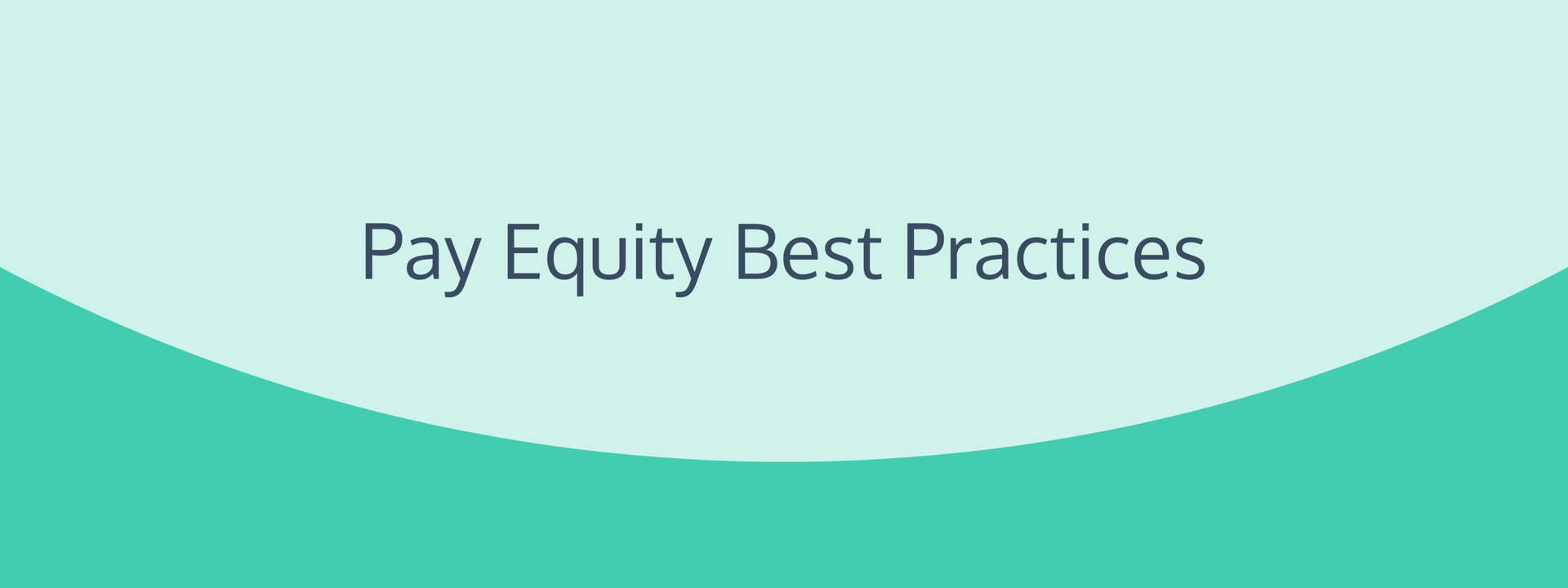
Pay Equity Best Practices
For HR and business leaders determined to overturn the status quo, here are best practices that help narrow the pay gap.
Best practice #1: Share pay bands or salary bands
Sharing pay bands or salary bands in job postings and job interviews is one of the simplest and most effective ways an employer can make progress toward pay equity. Pay bands or salary bands are key to pay transparency because they allow you to share comp without divulging individual salaries. And increasingly, states like California and Colorado are passing laws that require companies to make pay bands or salary bands public.
Pay transparency is a way to win talent in a competitive market where workers are sharing salaries on Twitter and shared public spreadsheets.
Here’s an example of how to share a pay band or salary band with a job candidate: For a marketing manager with five to seven years of experience, we pay between $100,000 to $120,000 based upon San Francisco benchmarks, regardless of where someone lives.
It’s important to note that salary bands and pay bands only work when they’re based on fresh, reliable and relevant data. Without the right data, salary bands and pay bands are just numbers.
Pay bands or salary bands only work when they’re based on fresh, reliable and relevant data. Without the right data, they are just numbers.
Best practice #2: Document and communicate the criteria for bonuses, promotions and benefits with employees
Fair and equitable pay goes beyond the initial offer. Documenting and communicating criteria for rewards and promotions is a known best practice for pay equity-conscious employers.
Documented processes and criteria give your managers and other decision-makers an objective framework for pay transparency. And employees get a clear picture of how they could progress through a company, allowing them to make better career decisions.
Best practice #3: Don’t ask candidates for salary history
Avoid building on the mistakes of past employers. When you base compensation on someone’s previous salary, you risk continuing unfair or inequitable pay practices. That leaves individuals — especially women and minorities — perpetually underpaid.
For women, this wage gap could mean up to $2 million in lost wages over a lifetime.
Instead, craft an offer based on relevant market data and your compensation philosophy. The onus is on employers to offer fair and equitable pay.
Best practice #4: Conduct pay audits to spot pay gaps
You can’t fix pay gaps if you don’t know where they exist and to what extent. Periodically assess pay equity at your company to reveal what’s working and what changes you need to lead.
If there are gaps, can you determine the causes? Were they discriminatory or due to lack of planning or strategy?
Implementing pay audits is related to one of the most common roadblocks to pay equity: leadership buy-in. In a SHRM study, nearly half of HR managers surveyed said their organizations don’t conduct pay equity reviews because it’s not a priority for senior leadership.
The same SHRM study also revealed that only 35% of organizations provide training on how to properly document pay decisions. This is noteworthy considering another common roadblock is “insufficient knowledge “ for teams.
Best practice #5: Proactively budget to correct for pay discrepancies
How do you close the gaps that the audits reveal? If you spot pay gaps and do nothing to fix them, you could get in hot water with employees, the law and the media. You have to budget for pay equity.
During merit cycles (also referred to as annual reviews or focal reviews) employees are commonly rewarded with raises, promotions or bonuses. Merit cycles are also opportunities to make salary adjustments that correct pay inequities as well as leveling or market inaccuracies.
When preparing for merit cycles, make sure you budget for any adjustments required to sustain fair and equitable pay practices. There are tools out there that can help.
Best practice #6: Have informal internal discussions
Extend compensation conversations beyond the hiring process and annual reviews. Ongoing discussions about pay are core to a culture of trust. Here are the pillars of meaningful compensation conversations:
- Consistency: This is key in compensation. Make sure everyone receives the same message and understands how compensation is handled across the board.
- Pay transparency and education: These two pillars go hand-in-hand, because information without context is meaningless. Don’t just share compensation information, help people understand what it means for them.
- Open door policy: Executives, managers and employees should feel comfortable and empowered to talk to each other about compensation whenever a need or question comes up.
Additional best practices for obtaining, analyzing, and using pay equity analysis data:
- Develop a compensation philosophy that describes your commitment to pay equity and how you plan to achieve it.
- Use reliable market compensation data to understand the competitive landscape for company positions.
- Compare employee compensation in similar jobs, including relevant parameters such as job function, level, responsibilities, years of experience, and geographic location.
- Develop a clear policy and define the repeatable practices your company uses to address and correct pay inequities.
“When you say I’m tying something to compensation, what you do is you signal that the thing is really important.”
Aparna Rae, Cofounder, Moving Beyond

How to Close Wage Gaps With A Pay Equity Analysis
As your organization continues to hire, pay inequities can silently creep in, leading to wage gaps throughout your workforce. If these wage gaps persist, you risk creating a culture based on unfair pay practices, potentially damaging morale, hurting employee retention, and exposing your company to discrimination claims.
By conducting a pay equity audit and using available pay equity analysis tools, you can identify potential inequities in your pay practices and access the data you need to make adjustments.
Besides creating more fairness in your pay practices, there are many other reasons to understand and correct pay inequities in your organization, including:
- Creating a culture in which individuals performing similar work are paid equitably
- Building trust among employees and demonstrating that your organization is committed to equality
- Developing a stronger employer brand
Here are five ways to use a pay equity analysis to identify and close wage gaps.
1. Maintain overall compliance with federal and state pay equity laws
The Equal Pay Act, which requires that men and women be given equal pay for equal work, has been in effect since 1963. However, new pay equity laws have cropped up in several states. For example, salary history bans prohibit employers from using candidates’ current or previous compensation to set pay. Thus far, 21 states and several local municipalities have enacted salary history bans. Some states and municipalities also require employers to provide salary band or pay band information to candidates upon request.
By learning how to conduct a pay equity analysis and addressing pay inequities, you are taking critical steps to comply with federal and state pay equity laws and pay all employees equitably based on their roles and contributions.
2. See your current pay practices and policies through the lens of racial and gender equity
It’s never wise to set employee compensation in a vacuum. In addition to considerations related to market competitiveness, geography, and the impact on your burn rate, you also need to know how your pay practices affect internal pay equity.
Using a pay equity audit tool allows you to see the impact of each hire and pay decision on your internal pay equity metrics. Instead of suddenly discovering months or even years later that you have race and gender pay inequities in your organization, having access to real-time compensation intelligence gives you an accurate picture of where there may be issues so you can quickly take action.
3. Drive a more detailed comparison of similar roles within your company
It can be difficult to identify pay inequities with a casual review of company positions, for example, by comparing positions with the same job title. Moreover, unless you employ a team of statisticians, you probably don’t have the internal skill set to conduct a complex pay equity regression analysis. Gender segregation also sometimes exists within certain departments that pay less than others. However, with the help of a modern pay equity analysis tool, it’s possible to conduct a deeper analysis of similar roles and determine if pay inequities exist.
4. Deepen your commitment to diversity, equity, and inclusion (DEI)
Like many companies, you may have a diversity, equity, and inclusion (DEI) strategy supported by specific goals. Meeting your DEI goals requires several actions, including creating a culture in which all employees feel valued and taking steps to hire diverse talent. From a compensation standpoint, building greater pay equity is one of the most critical ways to demonstrate your commitment to DEI. Identifying and correcting any pay inequities in your organization sends a clear message to your workforce and investors that you are committed to fairness and equity.
5. Improve your ability to attract and retain talent
Having a strong employer brand can help you attract and retain talent in today’s competitive market. Developing your company’s brand requires demonstrating your actions to deliver pay fairly. If you don’t, you could risk pushing great candidates away. A Glassdoor survey found that 67 percent of candidates would not apply for a job at an organization where they believed a gender pay gap existed.
Conducting a pay equity audit periodically and making corrections where necessary allows you to build a reputation for fairness and equality—two key characteristics candidates and employees expect from employers today.
“Good intentions about gender pay equality are no longer enough. Top founders and company builders now focus on measurable outcomes.” Matthew Harrigan, CEO, Company Ventures

Final Tips To Nail Pay Equity
What a company stands for from its inception reflects its future. While it’s easy for early-stage companies to wait for some future fundraise or product launch to think beyond profit, startups can actually make an impact early, scaling socially responsible best practices as they grow. In fact, it may even be more difficult to successfully implement new practices on top of or in place of existing ones over time.
How OpenComp Approaches Social Impact Work
From the very beginning, OpenComp has intended to operate as a social enterprise, doing good as we do good business. We go about integrating mission-driven values into our work and business by way of three core pillars:
Pillar 1: Company
As a company, it’s imperative our mission-driven values show up in everything we do. For us, this looks like:
- Ensuring diversity, equity, and inclusion (DEI) best practices and policies are fully integrated and incorporated throughout the company and are reflected in our hiring, culture, and employee benefits and experience.
- Developing social impact-focused action plans for each department including HR, Finance, Marketing, and Product to ensure we aren’t leaving any stones unturned.
- Encouraging employees to play a role in our social impact work by expanding volunteering benefits and launching a Social Impact employee committee.
Pillar 2: Product
OpenComp’s platform provides companies with a simple but powerful way to address pay inequity head-on through our DEI tracking capabilities. As we continue to roll out new features, we’re intentionally working to expand our diversity, equity & inclusion monitoring and reporting capabilities in the platform, so customers can quickly access the insights they need to spot problems early and course-correct as needed.
Pillar 3: Community
In March 2022, we launched OPEN Imperative, a coalition of growth company leaders with a moonshot goal of ending gender pay disparity by 2027. The purpose of this community is to provide companies with the tools, resources, and data to close gender pay gaps within their organizations.
OPEN Imperative members are leaders who aren’t just building companies; they’re committed to building a better future.
“Fair pay is a core part of Ribbon Home’s approach to compensation. We are excited to join OPEN Imperative, to share this and other best practices with the group and learn from other innovative compensation leaders.” Maggie Mannion, previous Senior Manager of People Operations, Ribbon Home
How We Can Create Change Together
Investing in social good doesn't mean dialing back in other areas. It lifts our companies and the ecosystems around us. Best of all, we don’t have to go it alone.
One action you can take today is to join OPEN Imperative. Members receive a free pay equity analysis to help them make real, measurable progress toward their pay equity goals.
For access to the quality data and tools you’ll need to assess your pay equity status ongoing, check out our platform.
Our DEI Scorecard enables you to ensure pay equity across your workforce with automated identification of differences in pay by gender and ethnicity.
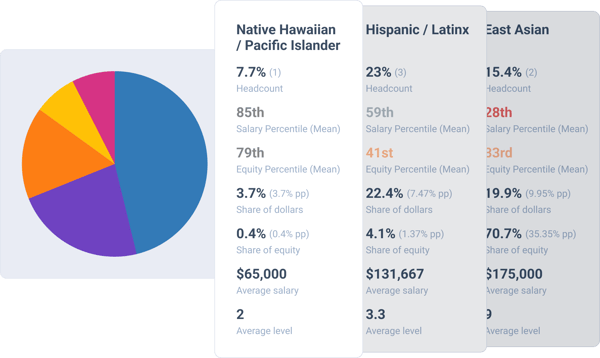
With a supportive community like OPEN Imperative and tools like DEI Scorecard, OpenComp customers are already solving real problems and have reduced pay gaps by 75% within their organizations. If you’re ready to take the next step, reach out!
Download a PDF version of this report by filling out this form
Simply fill out this form to receive a PDF version of our guide.
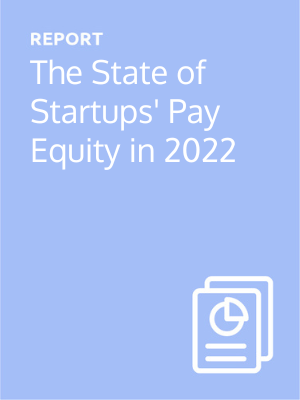

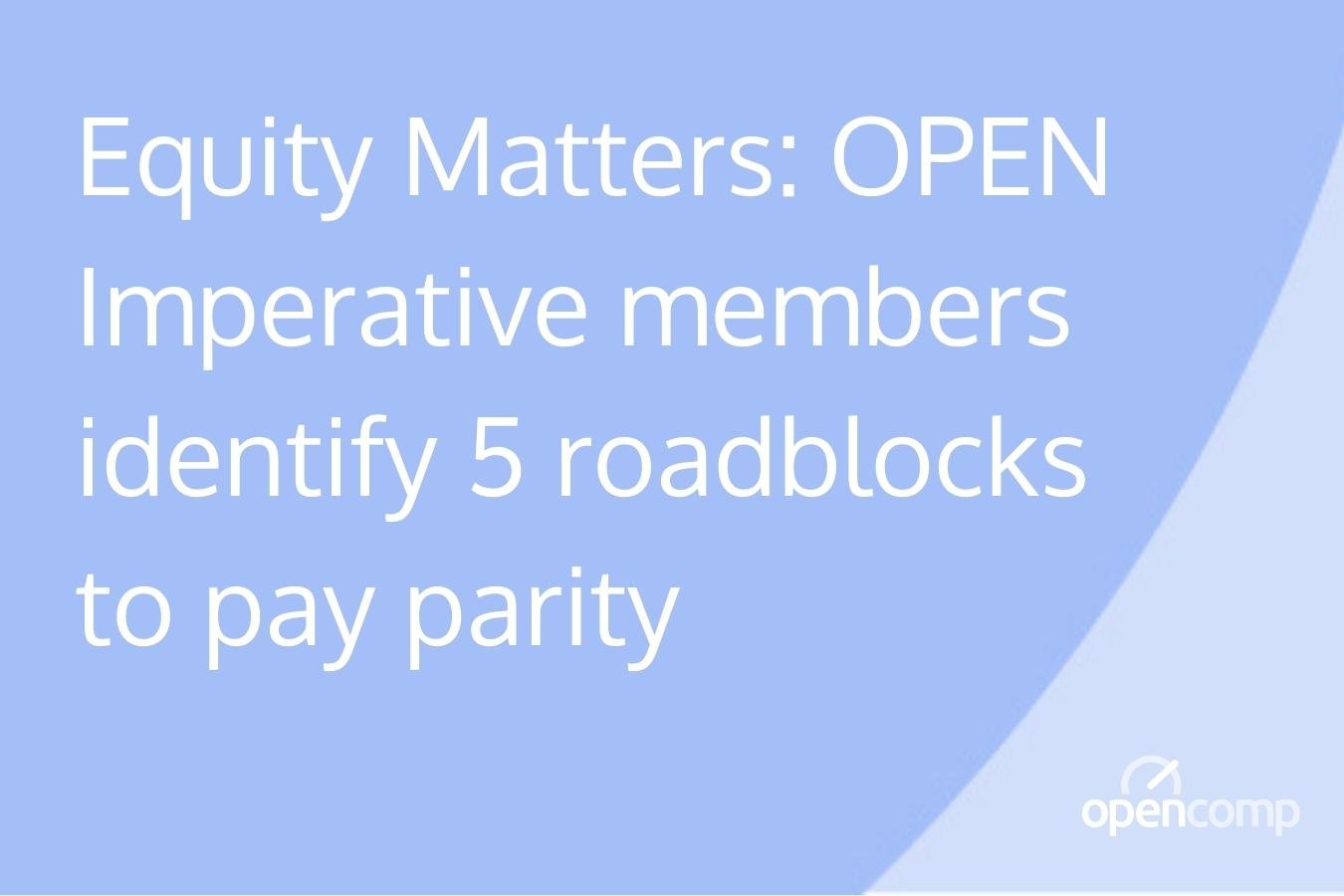
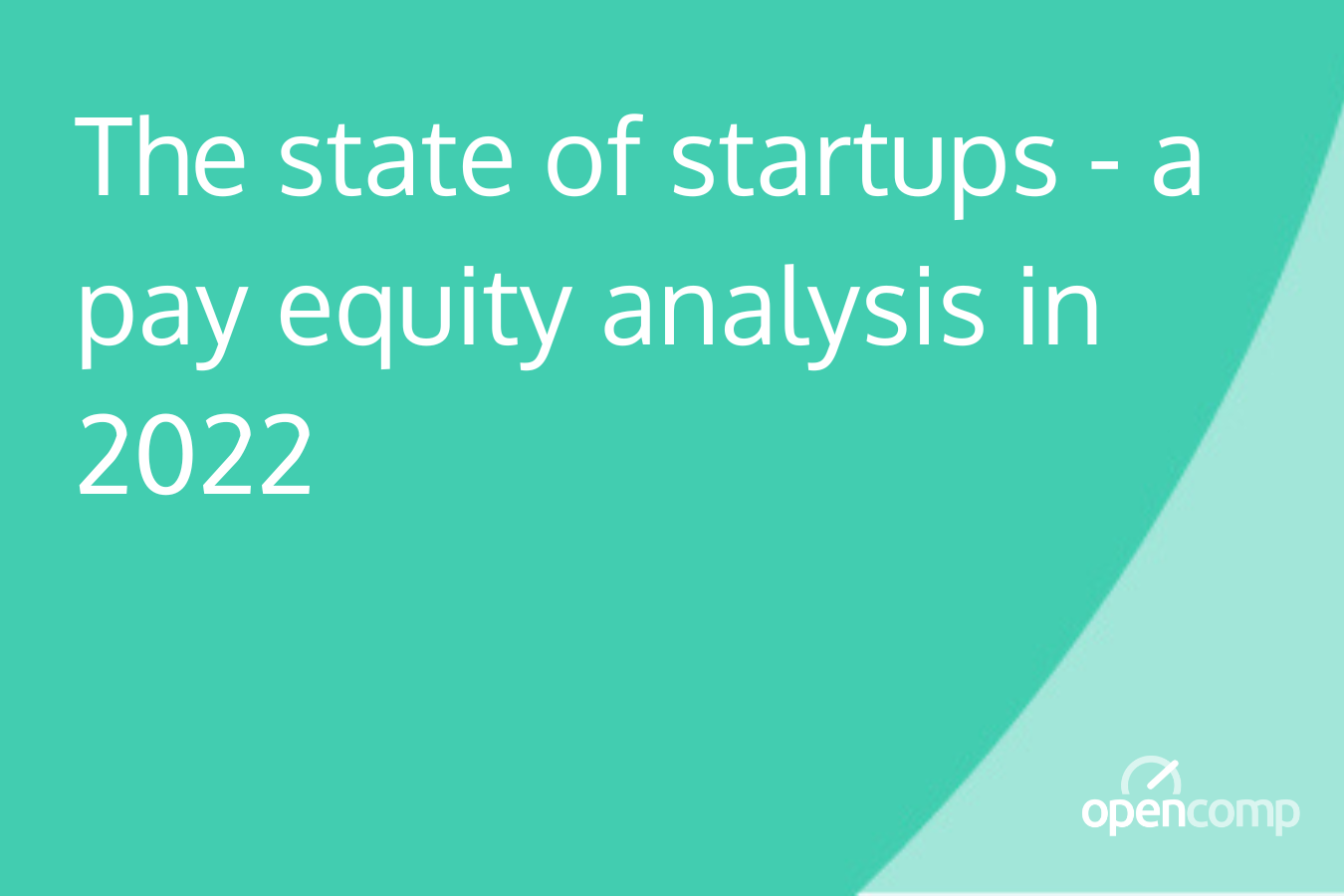
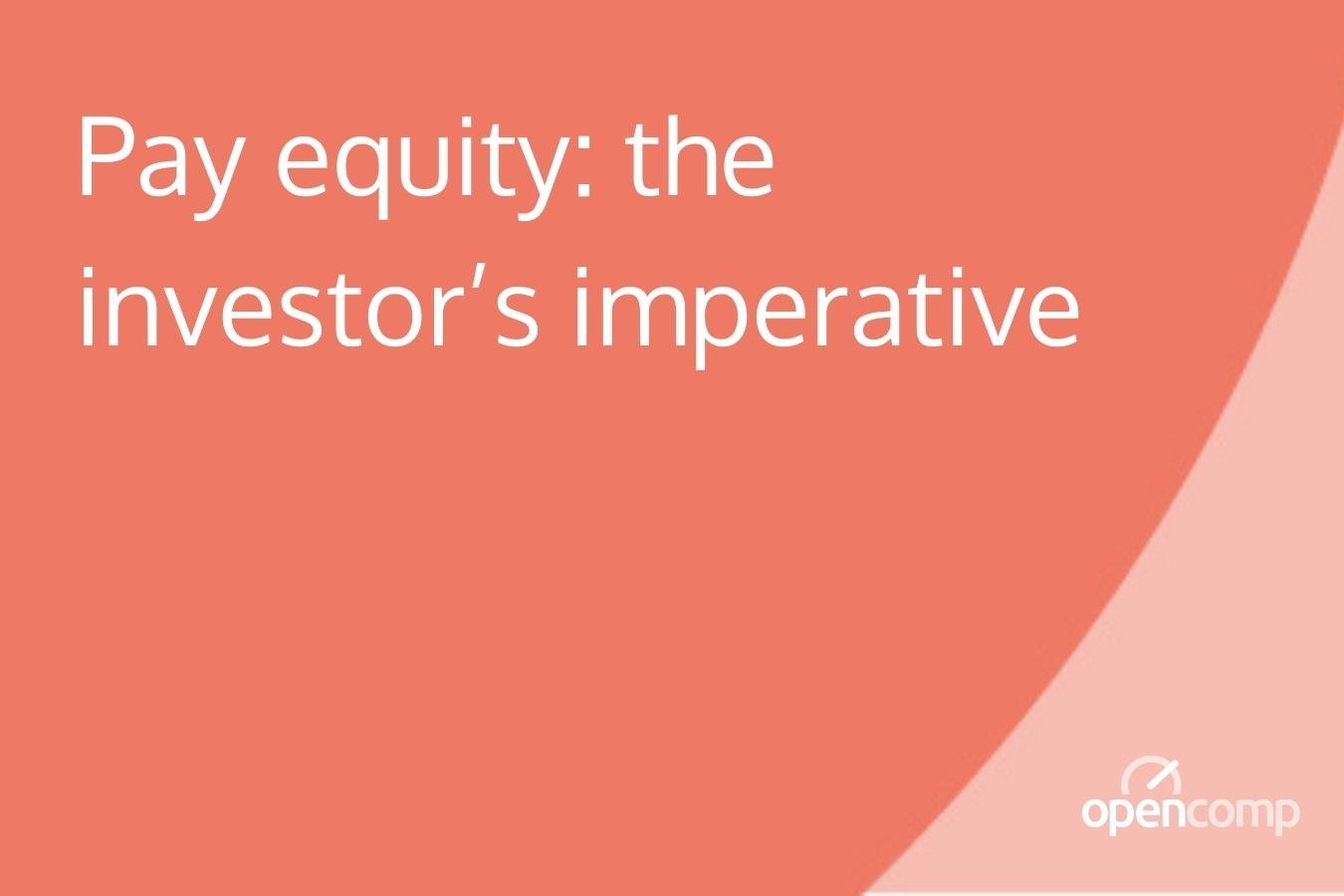
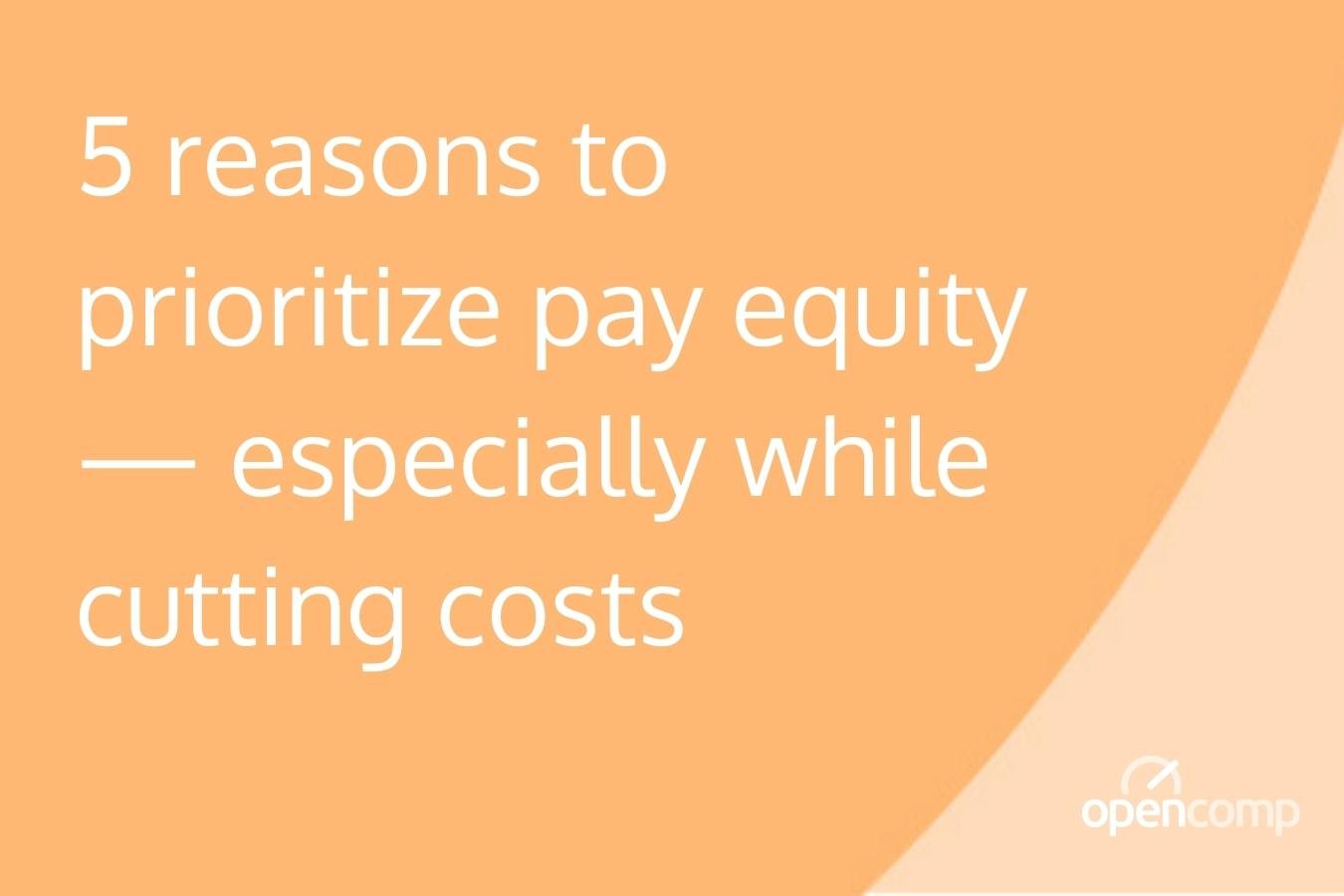
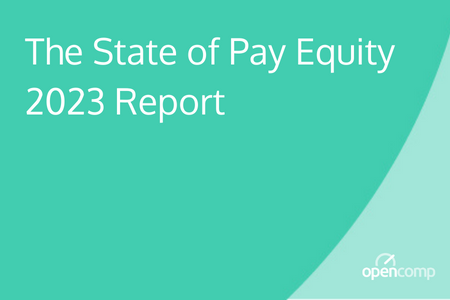
.png)
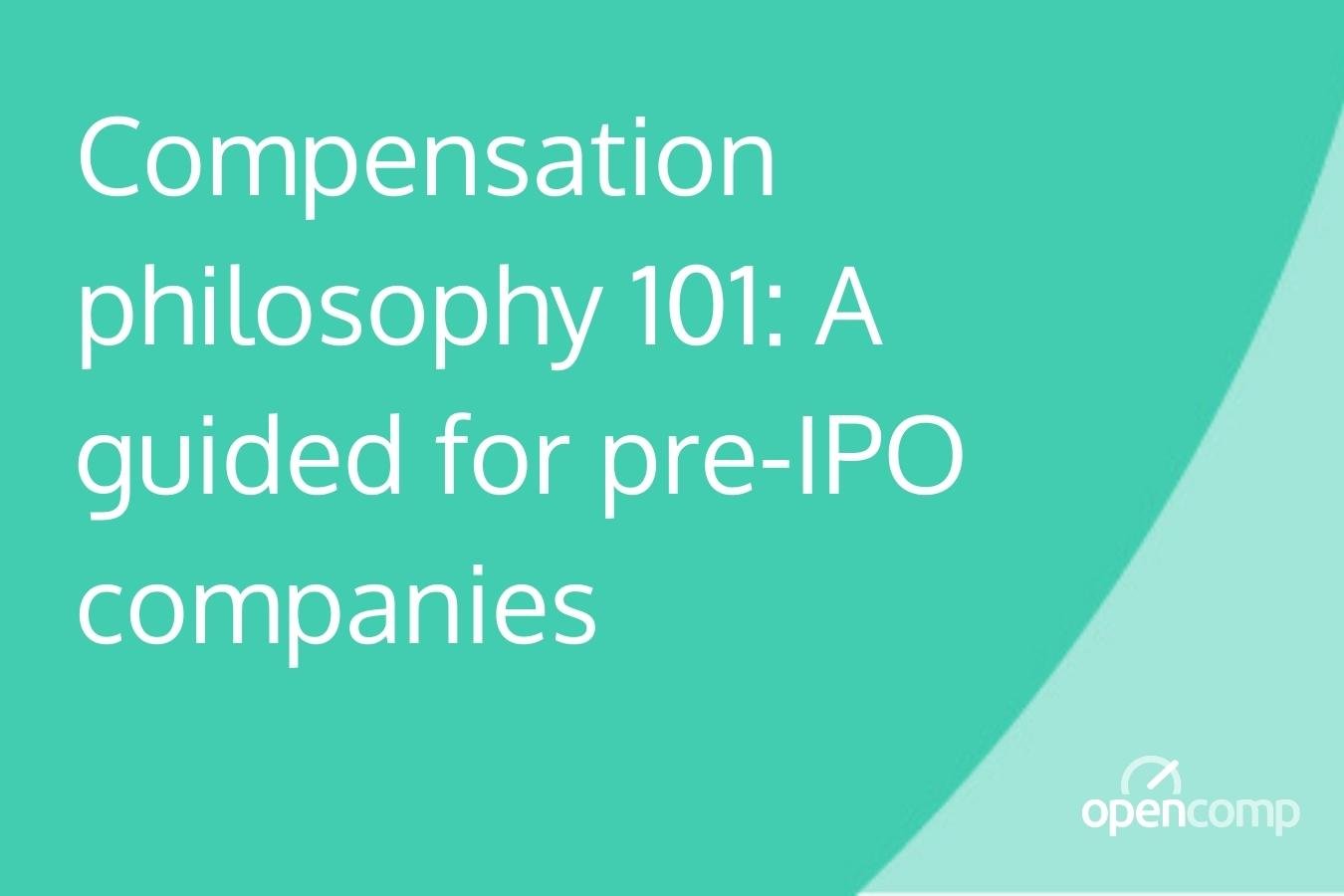
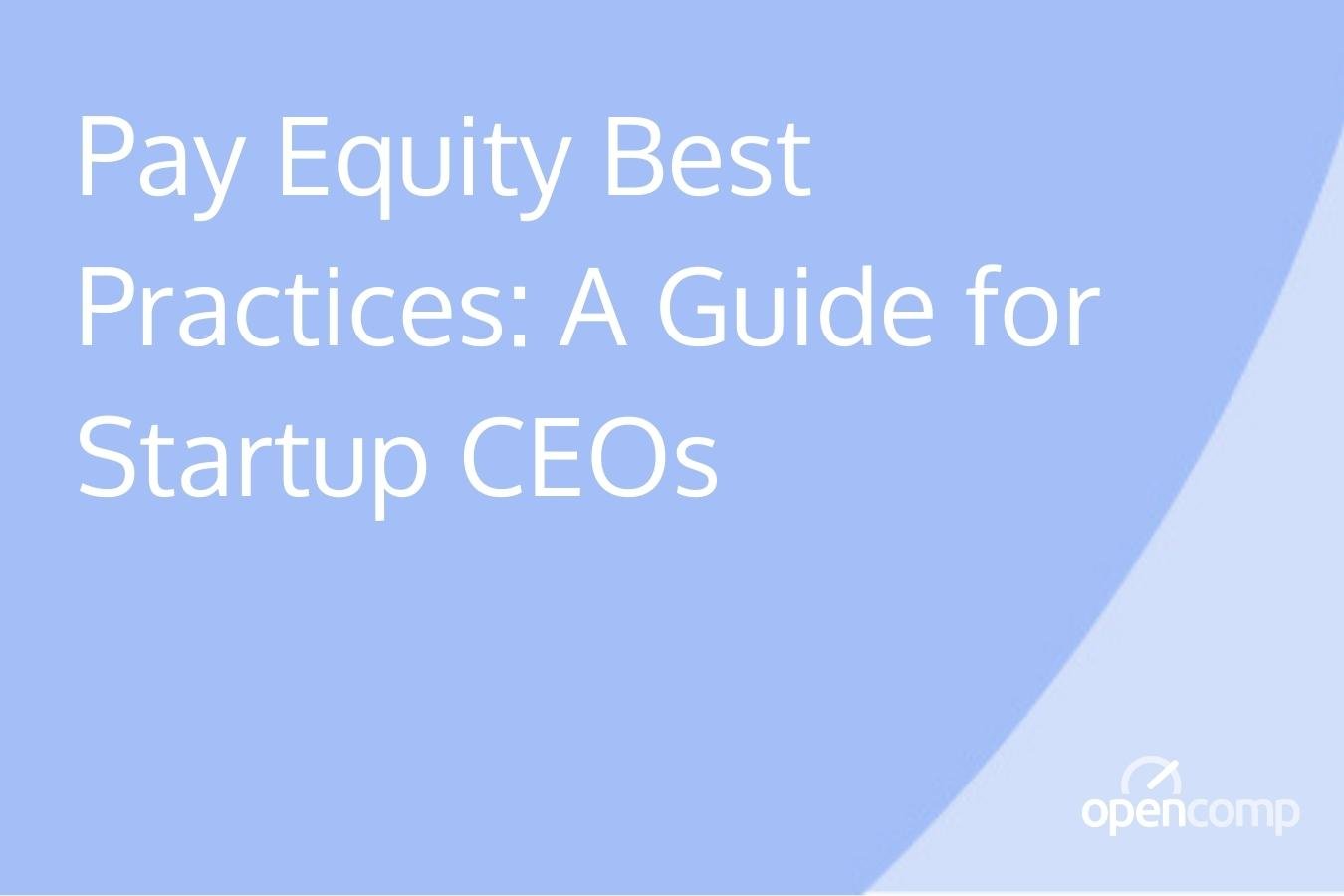
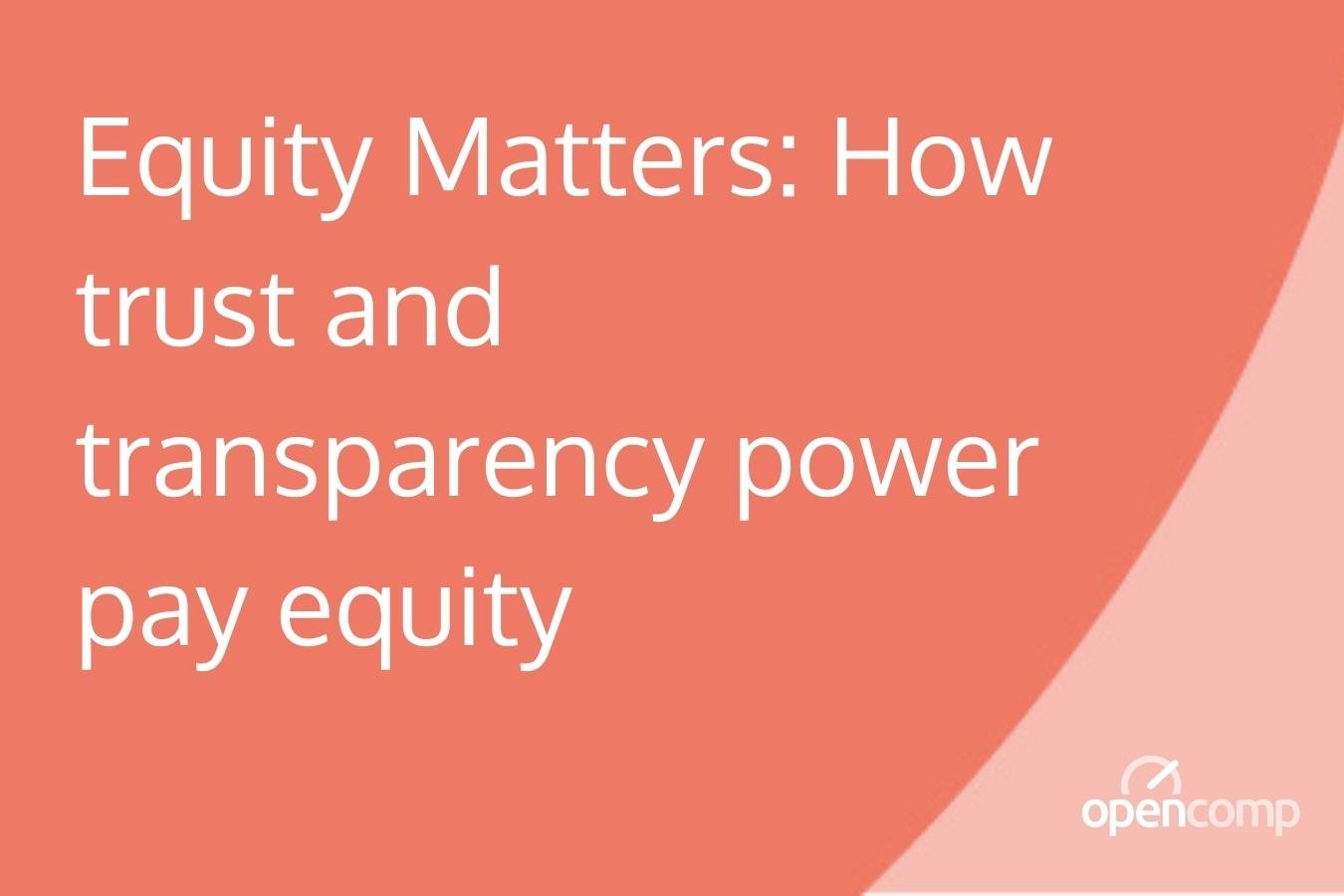


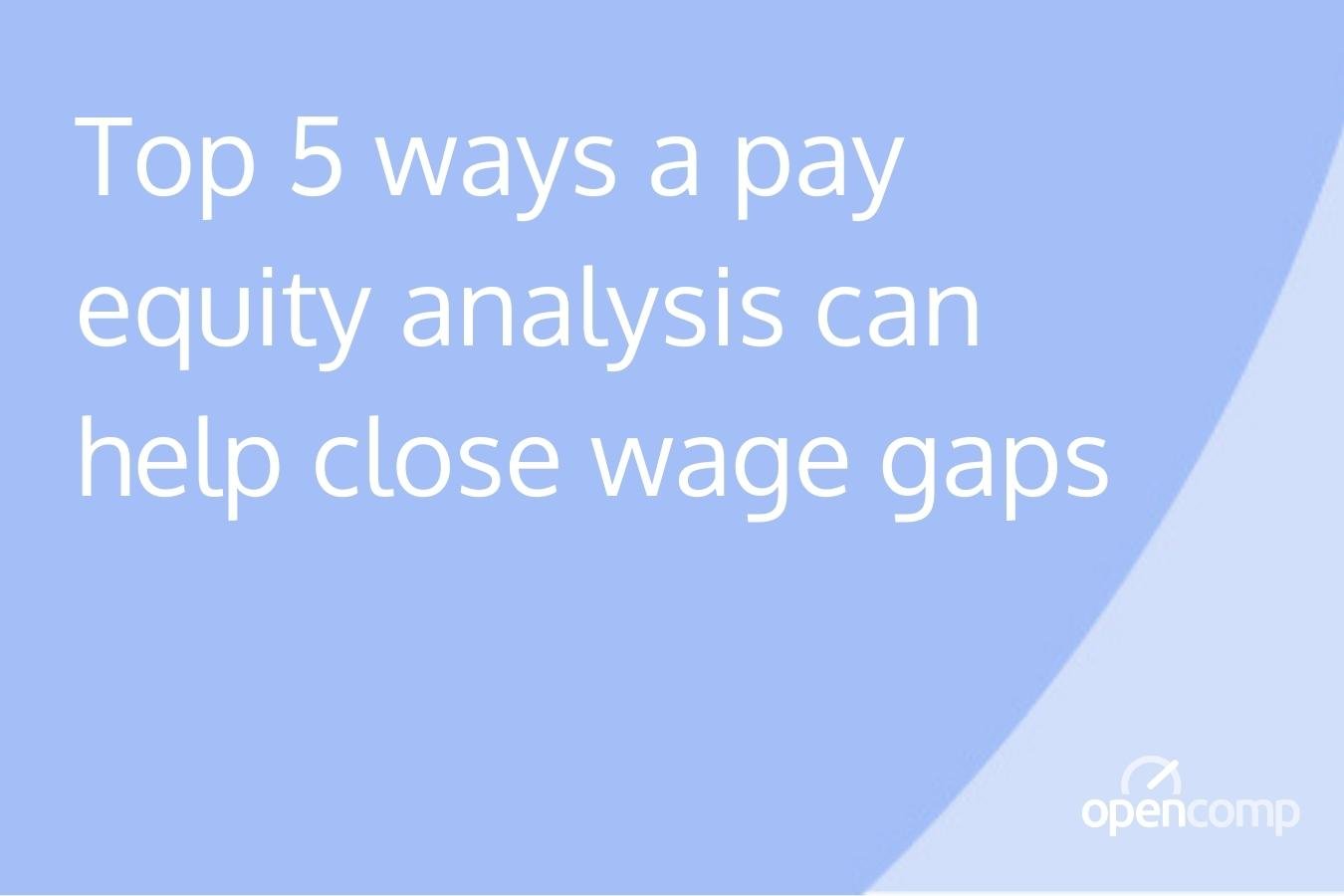



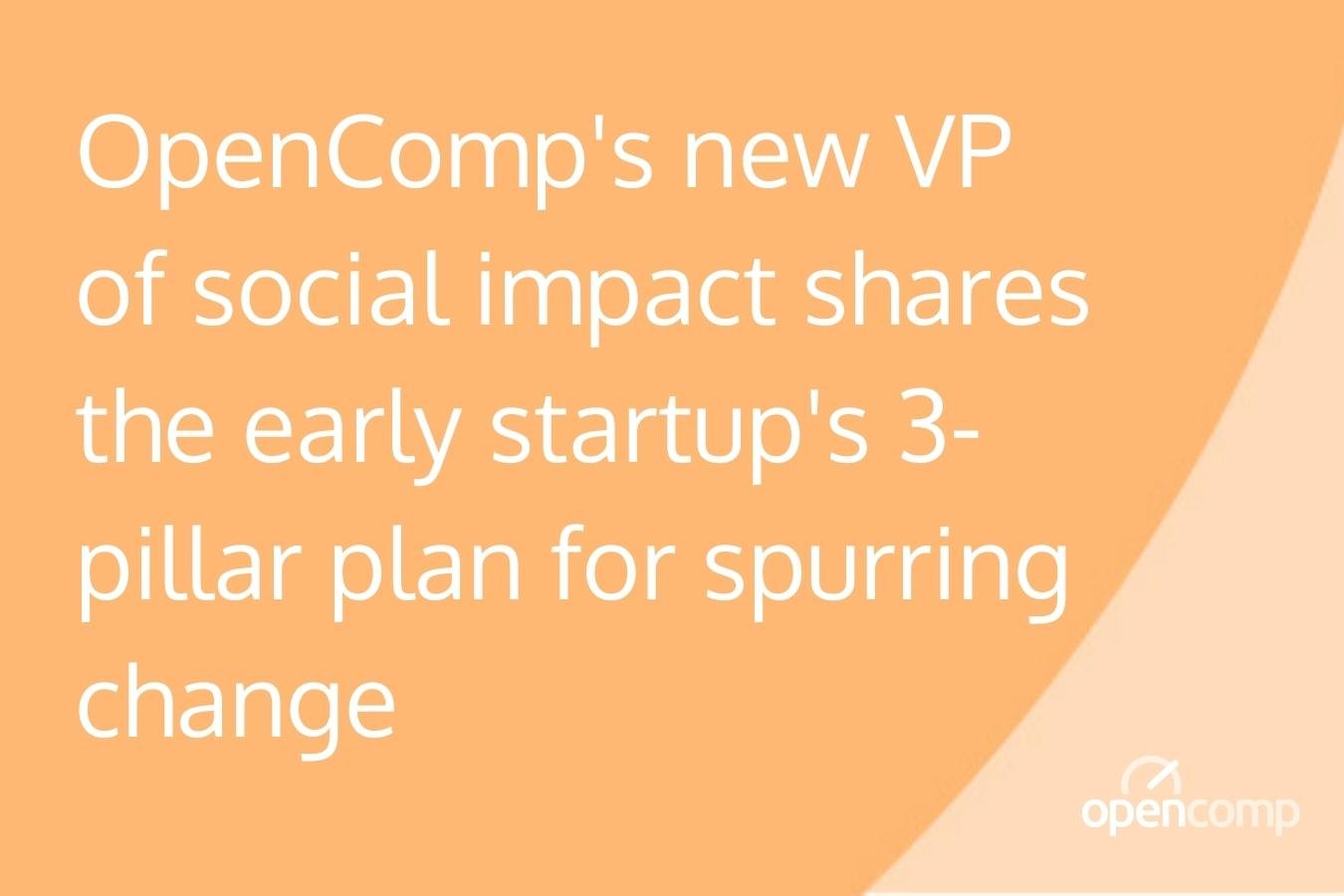
.jpg?width=1350&height=900&name=Equity%20Matters_%20How%20Your%20Comp%20Philosophy%20Can%20Advance%20Pay%20Equity%20(2).jpg)
.jpg?width=1350&height=900&name=Top%205%20ways%20a%20pay%20equity%20analysis%20can%20help%20close%20wage%20gaps%20(2).jpg)